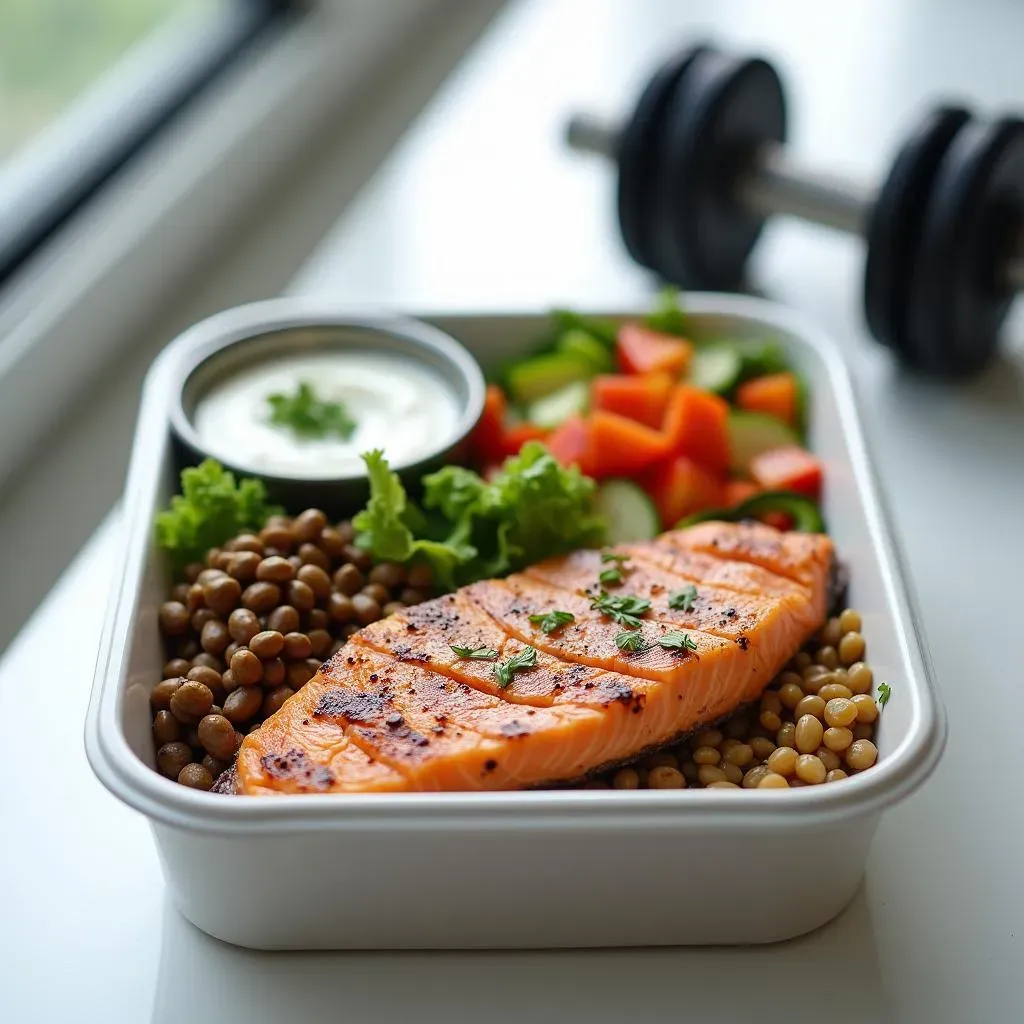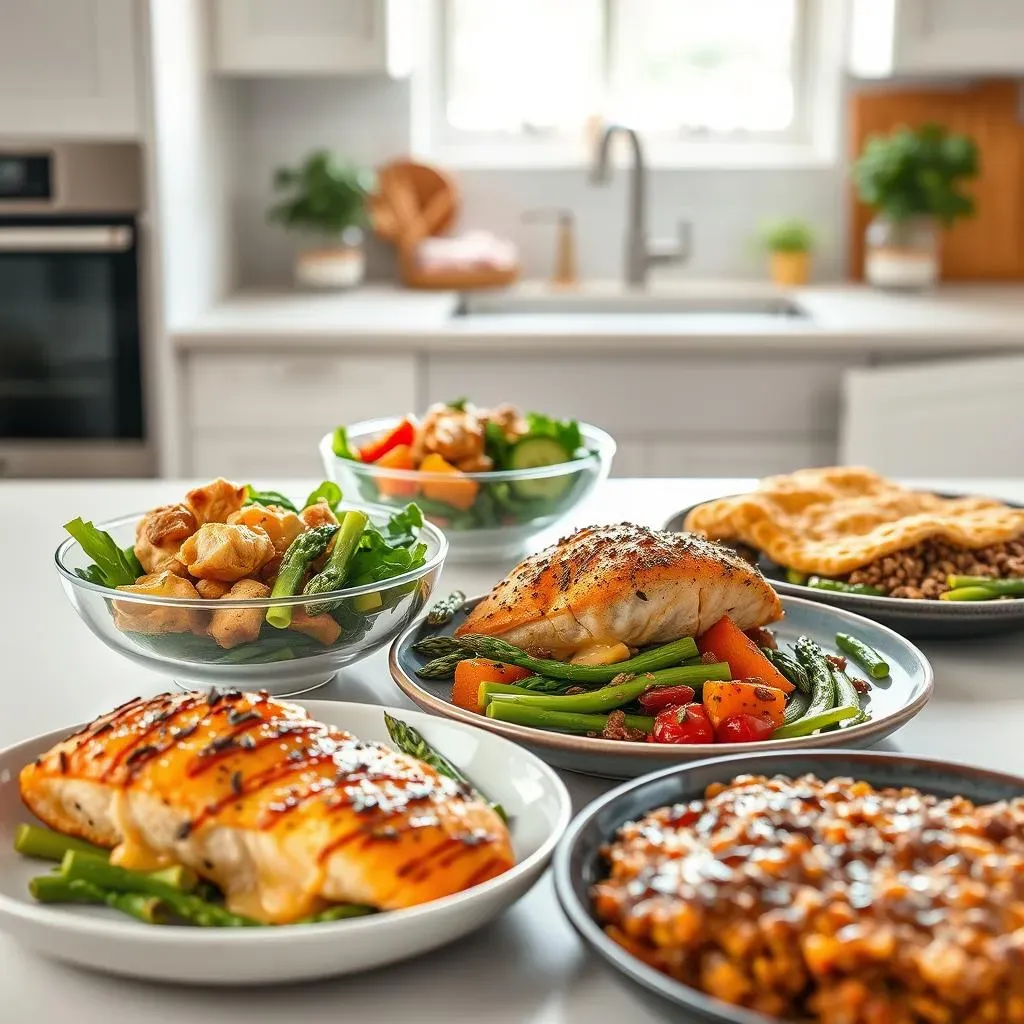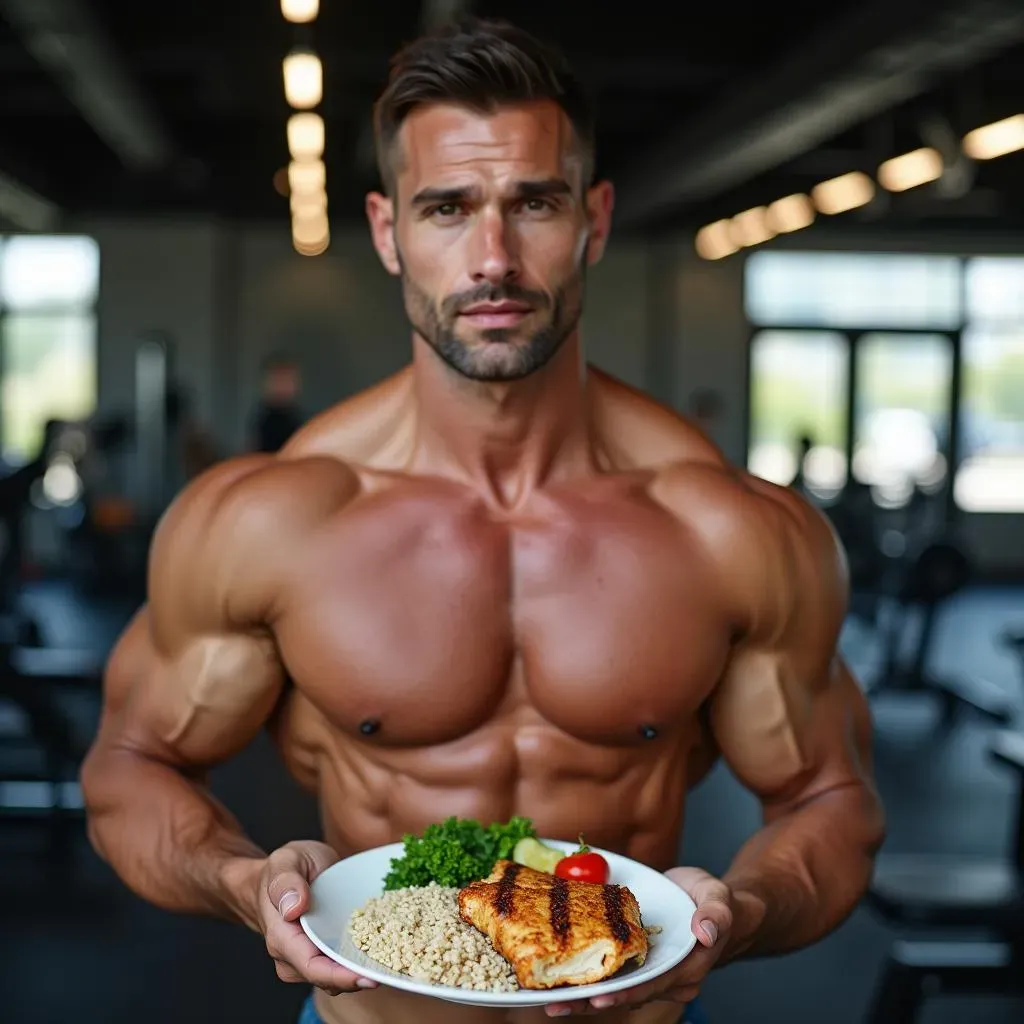Table of Contents
Ready to build serious muscle? Forget those expensive protein shakes and complicated gym routines. The secret weapon to achieving your fitness goals might be hiding in your kitchen: high protein meal prep! This article is your ultimate guide to mastering the art of high protein meal prep ideas for muscle gain. We'll break down the essential principles of building muscle through proper nutrition, focusing on practical, delicious, and time-saving strategies. First, we'll cover the fundamentals of high-protein meal prepping—what to look for in your ingredients, how to plan your meals effectively, and the benefits of prepping in advance. Then, get ready to drool over a collection of mouthwatering, high-protein recipes designed to fuel your workouts and help you pack on lean muscle. We'll cover various protein sources, accommodating diverse dietary preferences. Finally, we'll explore advanced techniques to optimize your meal prep, ensuring you're maximizing your muscle-building potential. So, ditch the fast food and embrace the power of planned nutrition. Let's build some serious muscle, together!
High Protein Meal Prep Ideas for Muscle Gain: The Basics

High Protein Meal Prep Ideas for Muscle Gain: The Basics
Understanding Your Protein Needs
So, you're diving into the world of high-protein meal prepping for muscle growth? Awesome! The first thing you need to grasp is how much protein your body actually needs. It's not a one-size-fits-all answer; it depends on your weight, activity level, and fitness goals. A general guideline is around 1.6 grams of protein per kilogram of body weight for muscle building. But remember, this is just a starting point; consulting a nutritionist or your doctor is always a smart move for personalized advice.
Let's say you weigh 70 kg (about 154 lbs). That means you should aim for roughly 112 grams of protein per day. Don't freak out if that seems like a lot—it's totally achievable with smart meal planning. Remember, consistency is key! You don't need to hit that number perfectly every single day, but aim for it over the course of a week.
Body Weight (kg) | Recommended Daily Protein (grams) |
|---|---|
60 | 96 |
70 | 112 |
80 | 128 |
Choosing Your Protein Sources
Now that you know your protein target, let's talk sources. Lean protein is your best friend here. Think chicken breast, turkey, fish (salmon, tuna, cod are all great choices!), lean beef, eggs, Greek yogurt, and even tofu and lentils for vegetarians and vegans! Each of these offers a slightly different amino acid profile, so variety is important. Don't just stick to one protein source; mix it up to keep things interesting and ensure you're getting a broad range of nutrients.
Remember, the quality of your protein matters. Opt for whole, unprocessed foods whenever possible. Processed meats often contain high levels of sodium and unhealthy fats, which can hinder your progress. This is where meal prepping shines – it allows you to control the ingredients and avoid those sneaky additives.
- Lean Chicken Breast
- Salmon
- Turkey
- Eggs
- Greek Yogurt
- Lentils
- Tofu
Delicious HighProtein Meal Prep Recipes for Muscle Building

Delicious HighProtein Meal Prep Recipes for Muscle Building
Chicken & Veggie Power Bowls
Let's kick things off with a classic: chicken and veggie power bowls! These are incredibly versatile and easy to customize. Cook a large batch of chicken breast (season it well!), roast a variety of your favorite veggies (broccoli, peppers, sweet potatoes are all winners!), and then portion them into containers. Add a scoop of quinoa or brown rice for extra carbs and fiber. Boom! You've got a delicious, high-protein, and satisfying meal ready for the week. Feel free to switch up the veggies to keep things interesting – one week it could be broccoli and peppers, the next week it could be Brussels sprouts and carrots. The possibilities are endless!
The beauty of these bowls is their adaptability. You can add different sauces and dressings to change the flavor profile entirely. One day, you might enjoy a zesty lemon-herb vinaigrette, while another day, you might opt for a creamy peanut sauce. This keeps things from getting monotonous, even if you're eating the same basic ingredients. Don't be afraid to experiment and find your favorite combinations!
Ingredient | Protein (grams per serving) |
|---|---|
Chicken Breast (100g) | 30 |
Quinoa (100g) | 4 |
Broccoli (100g) | 3 |
Salmon with Roasted Asparagus and Sweet Potatoes
Next up, we've got a delicious and healthy option packed with protein and omega-3 fatty acids: pan-seared salmon with roasted asparagus and sweet potatoes. Salmon is a fantastic source of high-quality protein, while asparagus and sweet potatoes provide essential vitamins and minerals. This recipe is perfect for a quick weeknight meal, and the leftovers make for a fantastic lunch the next day. Simply season the salmon with salt, pepper, and a squeeze of lemon, then sear it in a pan until cooked through. Toss the asparagus and sweet potatoes with olive oil, salt, and pepper, and roast them in the oven until tender.
This meal is not only incredibly nutritious but also visually appealing. The vibrant colors of the salmon, asparagus, and sweet potatoes make it a feast for the eyes as well as the stomach. To make meal prepping even easier, you can prepare the asparagus and sweet potatoes ahead of time. Roast a large batch on Sunday and store them separately in containers. When you're ready for your meal, simply reheat the vegetables and cook the salmon. This helps to streamline the process and make meal prep a breeze.
- Salmon fillets
- Asparagus spears
- Sweet potatoes, cubed
- Olive oil
- Salt and pepper
- Lemon juice
Lentil Shepherd's Pie (Vegetarian Option!)
Now, for our vegetarian friends (and anyone else who loves a hearty, flavorful meal), we have a high-protein lentil shepherd's pie! This recipe uses lentils as the base, providing a substantial amount of protein and fiber. You can use any vegetables you like for the filling—carrots, peas, corn, and mushrooms all work beautifully. Top it with a layer of mashed sweet potatoes or cauliflower mash for a healthier twist on the classic. This recipe is surprisingly easy to make in large batches and is perfect for meal prepping.
This recipe is a great example of how you can get creative with your high-protein meal prepping. By using lentils as a base, you're not only increasing the protein content but also adding fiber and other essential nutrients. The sweet potato or cauliflower mash adds a touch of sweetness and creaminess, making this a satisfying and delicious meal. It's also a fantastic way to sneak in some extra vegetables, ensuring you're getting a well-rounded and nutritious diet. Feel free to experiment with different spices and herbs to customize the flavor to your liking.
Advanced Strategies for High Protein Meal Prep and Muscle Gain

Advanced Strategies for High Protein Meal Prep and Muscle Gain
Mastering Macronutrient Timing
Okay, so you're prepping like a pro, but let's talk about *when* you eat. Macronutrient timing—getting the right balance of carbs, protein, and fats at the right times—can significantly boost your results. Think of it like this: your muscles are like a car engine. They need fuel (carbs) to perform, but they also need the building blocks (protein) to repair and grow after a tough workout. Consuming protein immediately after your workout helps kick-start muscle protein synthesis—that's the process of building new muscle tissue. Aim for a meal or snack with a good mix of protein and carbs within an hour post-workout. You might want to consider a protein shake with some fruit, or a chicken salad sandwich on whole-wheat bread. This helps replenish glycogen stores and reduces muscle breakdown.
Throughout the rest of the day, focus on distributing your protein intake evenly across your meals. This keeps your body consistently supplied with the amino acids it needs for muscle growth and repair. Don't be afraid to snack on protein-rich foods between meals, such as Greek yogurt, hard-boiled eggs, or a handful of almonds. These snacks help to prevent muscle breakdown and keep you feeling full and satisfied. Remember, consistency is key. By strategically timing your macronutrient intake, you can optimize your body's ability to build and repair muscle tissue.
Meal Timing | Focus |
|---|---|
Pre-Workout | Complex carbs, moderate protein |
Post-Workout | Protein and fast-digesting carbs |
Throughout the Day | Evenly distributed protein intake |
Tracking Your Progress and Making Adjustments
This is where it gets really interesting—measuring your success. Don't just blindly follow a meal plan; track your progress. Keep a food diary (there are tons of apps to help!), note how you feel, and pay attention to your weight and body measurements. Are you gaining muscle? Are you feeling energized? If not, it might be time to tweak your meal plan. Maybe you need more protein, more calories, or a different balance of macronutrients. This is an iterative process; don't expect perfection from the start. It's all about finding what works best for your body.
Remember, everyone's body is different. What works for one person might not work for another. That's why it's important to experiment and find what works best for you. Don't be afraid to make adjustments to your meal plan as you go. Pay attention to how your body responds and make changes accordingly. If you're not seeing the results you want, it's time to re-evaluate your strategy. It could be as simple as adjusting your portion sizes, adding more variety to your protein sources, or fine-tuning your macronutrient ratios. The key is to be patient and persistent. With time and effort, you'll find the perfect high-protein meal prep plan to help you reach your fitness goals.
- Track your food intake
- Monitor your weight and body measurements
- Pay attention to how you feel
- Make adjustments as needed